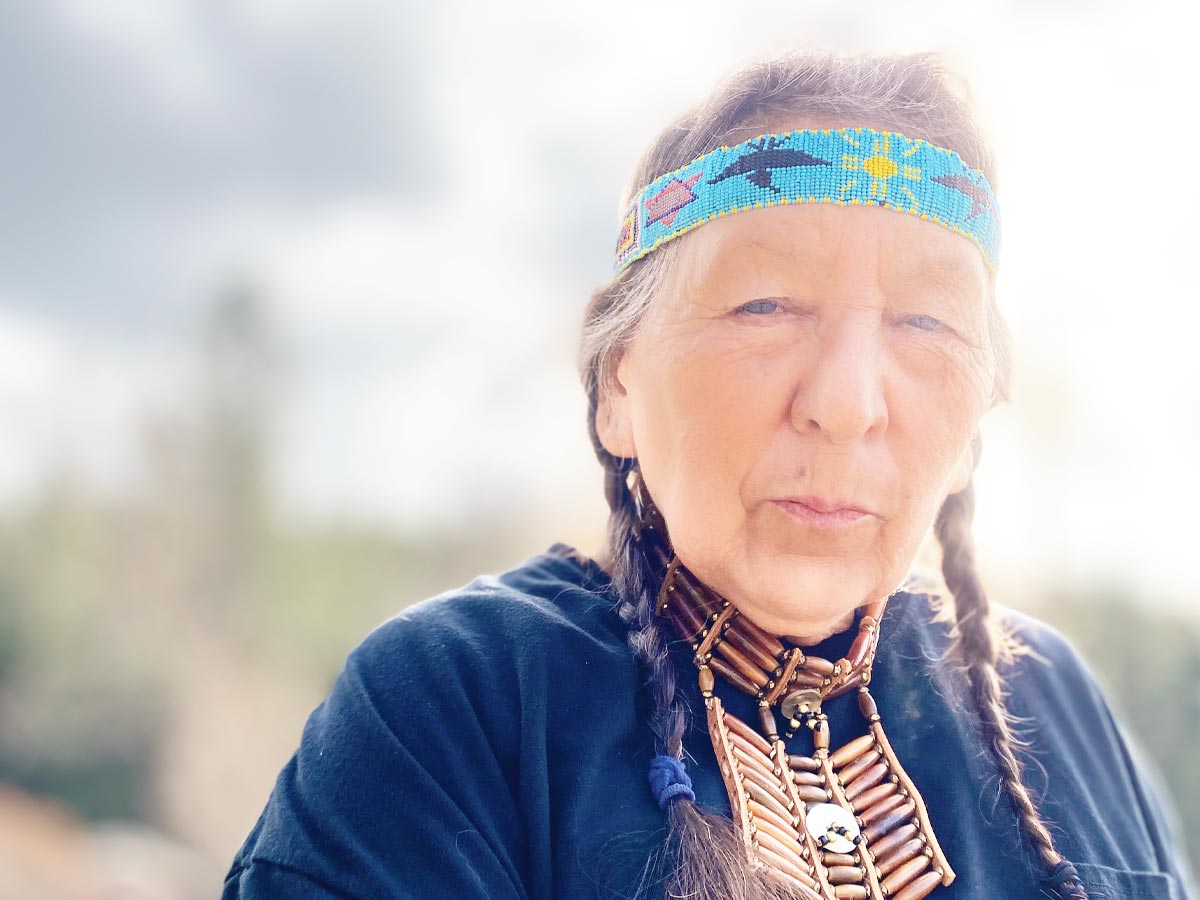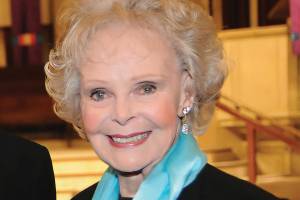By CARRIE SCOZZARO
“Generosity is a value in Anishinaabe beliefs,” said Elizabeth Louise Fischer, 70, of York, Mont. Her family name, Ogemahgeshig, means “Chief of all Light in the Sky,” which seems appropriate for a person whose entire existence seems to revolve around shining some light of hope and healing onto others.
She is an Anishinaabe traditional healer, a role she says came to her as a gift, which she credits to the higher power and to the teachings of two people who came before her.
“The role that I live is a gift from the creator,” said Fischer. “Also from my spiritually gifted mother, Norma, and a brilliant Indian woman, Sharon Enjady.”
For Fischer, giving is a way of life, be it her through her healing work for American Indian veterans at Fort Harrison or through art she shares with the community.
She is a prolific artist.
Last summer, for example, Fischer painted a tipi for a Helena-area business owner who expressed an interest in hosting educational workshops and healing ceremonies.
Members of the Lakota Sioux tribe constructed the 24-by-27-foot structure, after which Fischer adorned it with spiritual symbols.
“The circles on the bottom represent the spirits of the Earth and under the Earth. The animals represent our close connection to all living things,” said Fischer.
Visitors to the Devils Elbow Recreation Area at Holter Lake will find her work on the area’s interpretive signage.
The site was created for the Lewis and Clark Bicentennial celebration, for which Fischer was on the planning commission.
She organized an encampment of nearly 20 tipis, to celebrate the opening event. Numerous tribes gathered to bless the grounds, with activities ranging from historical presentations, canoe races, beading hide tanning, flint knapping, and more.
“My role [was] to educate the public about the past American Indian contributions and the Lewis and Clark Expedition,” said Fischer. “For days the celebration went on.”
The Bicentennial commission invited Fischer to create three pieces of art for the informational plaques at the Two Camps Vista overlook, above the Devil’s Elbow Campground.
“My art is very diverse,” she said.
Fischer works in enamel, acrylic, watercolor, pencil, pen, pastel, clay, and wood burning, but she also works in other mediums.
For the past five years, she has been salvaging old mining metal, to cut, paint, and transform into artistic renderings of Native dancers, medicine wheels, birds, and shields.
She also crafts drums, rattles, and shields from rawhide, as well as works with beaded leather.
In addition, she has made traditional dance regalia and has painted numerous murals and signs.
The list goes on.
Some of her artwork is available at Helena’s Sage and Oats Trading Post, while other pieces have been exhibited throughout Montana, including at the Museum of the Plains Indian in Browning and the Holter Museum of Art in Helena.
Fischer not only creates art for others to view—she teaches art, introducing her students to the therapeutic qualities of the creative process.
“I talk to them as we work, and they appear to get healing and enjoy their results,” said Fisher. “The ways we can experience healing are endless. Smiles, laughter, and joy. Pet a dog, ride a horse, or hug a friend. Practice meditation.”
Fischer offers other healing gifts at Fort Harrison for the Native and rural vet programming available through a partnership between the Montana VA and the Rocky Mountain Healthcare Network.
Along with other traditional healers, spiritual leaders, and pipe carriers, Fischer presents smudgings and Tribal Veterans Representative (TVR) training programs, organized by the Montana VA’s minority veterans program coordinator, Buck Richardson.
“As far as I know I am the only woman doing them,” said Fischer, whose father and brother are both veterans.
Fischer also leads talking circles at Fort Harrison, some just for women, which help foster respectful listening and reflection.
Participants pass around a beaded, medicine wheel talking stick. Whoever holds the stick is the designated speaker, while the rest of the group listens.
“It prevents one-on-one attacking or debating, solves problems, removes barriers, and is regarded as the main symbol for understanding life’s mysteries,” said Fischer. The focus of these discussion circles varies from sharing, healing, and meditation to listening and speaking from the heart, although participants are not required to speak.
But Fischer said the best form of healing is time spent in a sweat lodge.
Traditional healers host anywhere from one to four sessions a month for Native veterans at the Fort Harrison sweat lodge, according to Fischer.
Heated rocks—called grandfathers and grandmothers—are placed inside the sweat lodge. Participants breathe in steam created from pouring water over the rocks—and the healing process begins.
“The steam, songs, meditation, and total involvement of participants empowers them to endure the heat for much longer than they usually could, to overcome physical discomfort and frustration,” said Fischer. “Sustained heat releases the same endorphins as heavy physical exercise. It fights infections, arthritis, muscle pain, and is conducted in a safe manner where anyone is free to leave at any time.”
The healing is physical, emotional, mental, and spiritual, she said, bringing participants “clarity … peace, rebirth, love, warmth, healing in every aspect of your being.”
Like many others, Fischer has modified her activities since the spring of 2020, yet she’s found the upside to the past year of pandemic uncertainty.
After giving thanks and asking the creator to help all people, she has cleaned everything coming through her door.
She actually received a few gifts of her own in the process.
“The isolation gave me time with my husband, walks with my dogs, being with nature, and being in the moment,” she said. “I was able to create art and meditate.” MSN








